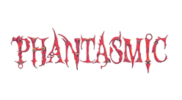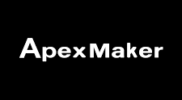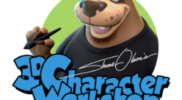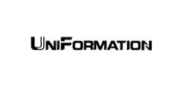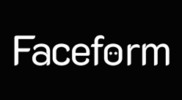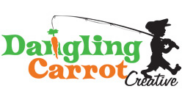
Louie Tucci has long been one of the most recognizable personalities in the ZBrush community. As a member of the Pixologic team for many years, he’s been involved in product development, marketing and has hosted many events including the ZBrush Summit. Since his days at the company, he’s ventured into a variety of avenues including education, music, toy design and more. Most recently, he’s teamed up with Wandering Planet Toys via a crowdfunded endeavor to help design a new collectible action figure commemorating the cult television classic The Prisoner, a niche project that falls perfectly in line with Louie’s offbeat and colorful creative persona. We recently sat down with the man himself as he told us what’s new and how ZBrush remains a trusted tool in his arsenal.

Hi Louie, good to be speaking with you again. You’re a familiar face to much of the ZBrush community, but for those who don’t know, tell us a bit about yourself and your journey as an artist
I was born in Toronto to an Italian Canadian family and spent most of my life in Little Italy before discovering ZBrush. Frankly, my interests were heavily aligned with music and performing music when a friend, Roja Huchez introduced me to ZBrush. He had been working on Avatar and returned from New Zealand to spend time with family and decompress. What resulted was an immediate appreciation for the potential of the software and while artistically inspired, I realized that if James Cameron was employing this tool to bring his creatures to life, clearly it would become a mainstay across multiple industries. Within a short period, I found myself standing in the parking lot of the Pixologic corporate offices here in Los Angeles. Serendipitous? Yes! Sometimes it’s better to jump and worry about finding the net later. I owe that one to Andrew Cawrse, who I might be correct in saying was told the very same thing by Richard McDonald. Information flows forward! Strangely, things lined up very quickly here in Hollywood and I was given an opportunity to join the ZBrush development team. Later, and about six thousand sales calls into my Pixologic career, I stepped into the role of Brand Manager. I think a lot of people perhaps know me in that role. LIVE from the…never mind! In those days, it was a team comprised of ZBrush fanatics. It still is! It’s always been about a bunch of people working out the best way for artists to be creative inside an application they all mutually find interesting. Ultimately, we were all behind the scenes working toward black belts in ZBrush. Of course, this only makes sense in reverse. I think having the space to experiment with tools and ideas is pivotal for advancing not only individual skills, but for pushing the envelope of development regardless of your industry. My days consisted of working to communicate to the public and associated clients what new features and functions were being incorporated while at the same time figuring out how those features worked together. Maybe that’s the most important point here. Try to imagine the component parts as a whole. It takes time and a lot of work to be able to step away and see things like that. This became clearer when I left the company. Left is too strong. Stepped away. I’m obviously still involved in certain aspects of ZBrush as a cultural tool. For me, the logical conclusion was to step into another role elsewhere while moving into the area of 3D printing. Working with 3D Systems allowed me to take my understanding of digital design further while stretching the possibilities of what could be created beyond the screen. At some point, perhaps after delivering a keynote at a conference, I realized that my abilities were at a level where others could benefit from my experience. Of course, working on the ZClassroom portal and associated tutorial videos in my time at Pixologic helped propel me in the direction of both secondary and post-secondary education. My current role as teacher and professor allows me to impact the lives of a diverse group of students from a wide range of cultures and socio-economic realities. I teach animation during the day to students in East Los Angeles. The position affords me a chance to advocate for access and opportunity where technology is concerned in a community known to be on the precipice of change. Change can only happen when technology is provided to all students in an effort to reduce or minimize opportunity gaps.
As an accompaniment, I continue to facilitate training seminars for members of the Art Director’s Guild of America through the Los Angeles Academy of Figurative Art. These seminars are directly aligned with emerging trends in the costume design, animation and illustration disciplines. I think ZBrush has made the act of creating inside computer aided spaces all the easier. What we see now is an advanced fusion of skills and technology coming together to propel both media content development and design further. Adding to this, I maintain a professorship at the Laguna College of Art and Design where I work to advance curricular development and instruction in the Entertainment Design program.
What projects have you been working on most recently?
My most recent work includes the HBO Game of Thrones Emmy Awards Party installation designed by Billy Butchkavitz. It was a large scale, about twenty-five feet high and twelve feet in diameter sculpture situated in the center of the room. Of particular note is my most recent foray into the arena of action figure design and production with Wandering Planet Toys. In my role as principle sculptor and designer I get to bring to life some seriously hip and off-beat properties. The team is fantastic and really dedicated to pushing the envelope where their offerings are concerned. We are excited about our recent campaign centered around the seminal cult classic television program “The Prisoner”. So far, collectors and fans can get their hands on Patrick McGoohan’s Number 6 and Eric Portman’s Number 2. Wandering Planet also has several variants on hand for the first wave. For me, sculpting action figures is a natural extension of some deeply rooted childhood dream. When I was a kid, all I wanted to do was meet Hong Kong…I actually thought Hong Kong was a man in China who made all the figures!! It made sense. His name was stamped on the inside leg of all my figures. Anyway, that’s my handle on the ZBrushCentral forum…Mr. Kong! LOL

Where does ZBrush fit in with your artistic process? How was it used on your recent projects?
ZBrush is such a central part of my being where art is concerned. It has played a dramatic role in my trajectory as a human being while also providing me with the opportunity to impact the lives of countless others. I really don’t know what I would be doing if not for ZBrush. To me, ZBrush works like a guitar or any other instrument… People see the guitar on the stand in the corner and they can pick it up and play. What someone plays versus what someone else plays are a matter of personality, experience, mood and various other factors. There’s a space where you open the software and just start noodling around. The same thing happens when I sit down to play guitar or piano. I am always trying to figure out ways to go from screen to print and for that, the software provides the right mix of technological sophistication and ease of use. The real magic is that it works to blur the line between traditional work and digital. You start out inside the application and by way of a desktop printer you are on your way to making physical artifacts. This is the direction my work is heading in. Of course, there is also the potential to do so much with an open mind.

For “The Prisoner” action figure line, my workflow is straight forward.
Primarily, since Patrick McGoohan is no longer with us, the sculpture is started from a ball of digital clay. From there, I engage in a process directly aligned with the traditional methods used by artists for countless generations. Collecting many images from the period in question works to provide multiple angles. There’s a tremendous benefit to observing a subject from varied angles and lighting situations when working to facilitate a likeness. The rest of the process is completed by using a very limited and simple collection of brushes.
One thing I would like people to be aware of is the concept of strategic topological application by way of the Sculptris Pro mode. You can advance the potential of the software by understanding that topology/resolution is either an inhibitor or enabler. By utilizing the Standard brush with Sculptris Pro on, ZAdd off and RGB on, you can essentially paint topology where you need it. I hope this will help someone somewhere!
The Scale Master plugin ensures that the figures are accurate and constructed to the correct scale. It’s an easy to use feature set found inside the ZPlugin menu.
Aside from the Clay Brush, Dam Standard, Move Topological and Clay Buildup, my workflow is ultimately just a glorified 3D drawing exercise.
It’s the most comfortable space for me as a designer in the digital realm. The tools are easy to access and the features work to allow me to realize likeness sculptures very quickly. In the arena of product development and collectibles, schedules are tight. Having the ability to make significant changes and adjustments to particular parts of an asset without worrying about topological restraints or rebuilding is liberating. Of course, that does not mean one should throw topological considerations out the window. They have a place and function inside the overall pipeline. It’s nice to get into the design process as quickly as possible and ZBrush has no rival in that regard where digital art is concerned, at least for me.

What are some of the key features you find most useful?
ZBrush is very compartmentalized when you step back for a moment. If you look closely, the interface is unique in its capacity to show you what you could be doing. The ease of use and simplicity associated with how the brushes work with the digital clay are what keep me motivated to stay in a digital sculpting space.
The other factors are related to Dynamesh, Sculptris Pro, ZRemesher and Spotlight. These features make continued edits and adjustments a breeze. Not to mention, management of the overall likeness and texture quality much more accessible. At the end of the day, MASKING is probably the most fundamental feature to understand inside ZBrush. I’ve spent years advocating the concept of utilizing the MASKING functions across a vast scope of the design process. I’ll stop here to give people a chance to meditate on what I mean. The Decimation Master and 3D Print Hub are also life savers!!!!
Visit Louie’s website at www.louietucci.com
Check out Wandering Planet Toys crowd funding page for The Prisoner project on KickStarter


